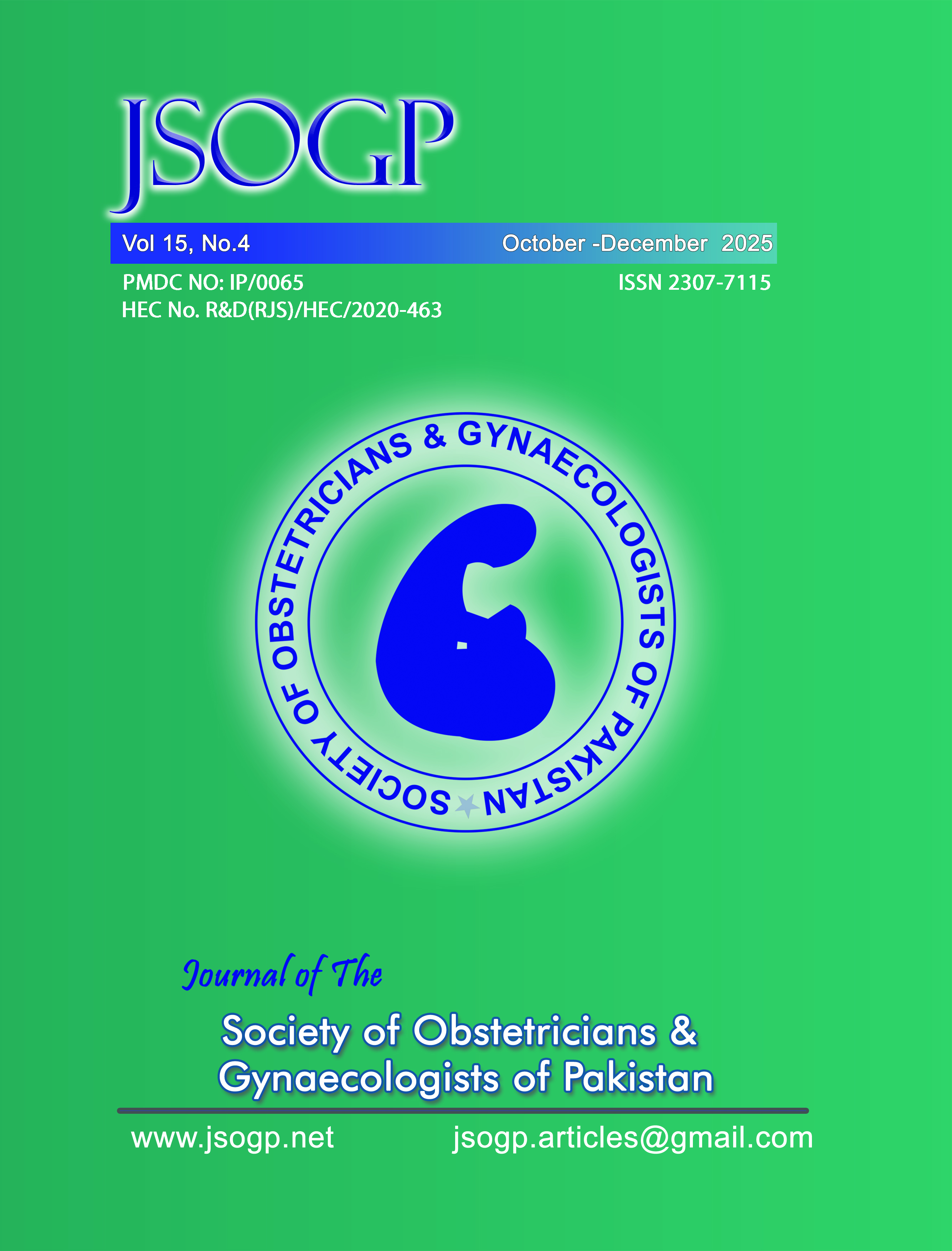Ki-67 as a Prognostic Indicator in Serous Types of Ovarian Malignancies
Abstract
Objective: To assess the frequency and distribution of Ki-67 immunoexpression across different histological subtypes and tumor grades of surface epithelial serous ovarian carcinomas.
Methodology: This descriptive cross-sectional study was conducted at the Department of Pathology, SZABMU (PIMS), Islamabad, Pakistan, from January 15, 2022, to July 14, 2022. All patients fulfilling the inclusion criteria and visiting SZABMU, Islamabad, during the study period were included. All specimens were fixed in 10% formalin, followed by gross examination, sectioning, embedding in paraffin blocks, and preparation of hematoxylin and eosin (H&E)–stained slides. The slides were examined under a light microscope, and the diagnosis was recorded. Immunohistochemistry for Ki-67 was performed and evaluated accordingly.
Results: The mean age of the study cohort was 52.4 years (SD ± 12.7). High-grade serous carcinoma constituted the majority of cases (62.9%), while low-grade serous carcinoma accounted for 37.1%. Evaluation of Ki-67 immunoexpression revealed low proliferative activity (1–30% staining) in 34.3% of cases, intermediate activity (31–50%) in 15.0%, and high proliferative activity (>50%) in 50.7%.
Conclusion: High-grade serous carcinoma was identified as the predominant tumor grade, with Ki-67 immunoexpression >50% being the most consistent proliferative marker. These findings highlight the need for larger, multicenter studies in Pakistan to validate the observed trends and strengthen their clinical and prognostic significance.
Copyright (c) 2025 Journal of The Society of Obstetricians and Gynaecologists of Pakistan

This work is licensed under a Creative Commons Attribution-NonCommercial 4.0 International License.

